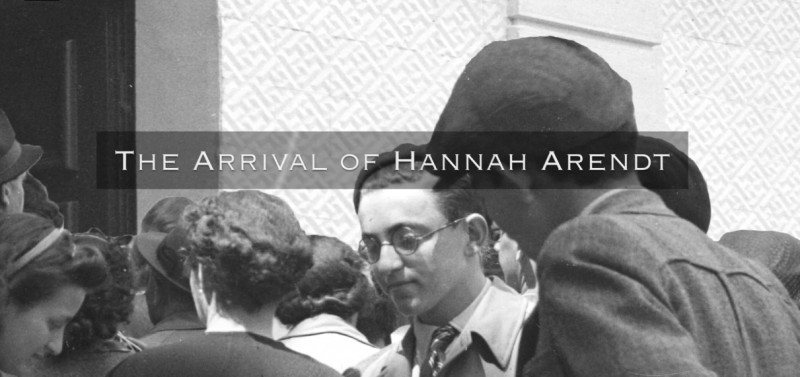
The Arrival of Hannah Arendt
This film describes the arrival of Hannah Arendt - a Jewish, German-American political theorist and publicist - in New York and her reflections on flight and helping people start over.

February 14, 1940
A Borrowed World
Living on charity is a bitter fate. Selma doesn’t look at me at all, and my aunt has become hard and stiff. She does speak to me, but it’s as if she has some complaint. I don’t refuse any kind of work. I clean Marvin’s shoes, and I prepare the vegetables for dinner even before I’m asked. Still, it’s as if the whole household has something against me. At night I even dream that I am in the middle of the room and all of them are standing around me and yelling, „Get out of this house. Get out!“ Selma’s double chin looks as swollen as cow’s udder. These dreams are silly, and when I awake, my heart aches, but I am happy to see that it is all a dream. Because where would I go?
My aunt must have said something to Mrs. Shore because when I met her on the staircase, it seemd like she had been waiting for me. She put her arm around my waist and invited me into her apartment, where she sat me down on the couch and made it clear that she wanted to talk to me about something very important.
On the wall opposite me, I saw a picture of a Turkish princess with a crown on her head surrounded by attedants who sat at her feet and handed her fruit. Mrs. Shore gave me some chewing gum and took a cigarette for herself. Then she said:“Listen, Rivke, in America, your best friend is the dollar, and you’re your own closest relative. Why do you need to sit in your aunt’s house? Selma is a girl; you’re a girl. Two cats in one sack can’t be good. It would be better for you to find work, and then you could have your own money and the whole world would be open to you.“
I listened and felt my heart hammering. Where should I go look for work? What kind of work? I thought that if Mrs.Shore had invited me into her apartment so she could talk to me, she probably knew what she was talking about. I suddenly felt as if I were living on borrowed time. I was borrowing Mrs. Shore’s couch to sit for a while. I was borrowing my bed for a few nights. Even the stairs were borrowed so that I could go up and down a few times until I could go down without returning back up. Borrowed time is just as awful as a borrowed dress or shoes. It’s not yours and has to be returned. Where on earth will I be able to find permanence? Where should I go? I don’t know how long I sat with my head bowed. I didn’t even notice when Mrs. Shore went into the kitchen and brought us coffee and kookees. She lifted my head up and said: „Don’t worry; there’s a big world out there.“
The author of the novel “A Jewish Refugee in New York” Kadya Molodovsky is one of the most important Yiddish poets of the mid-20th century. She was born in 1894 in Bereza Kartuska, Russian Empire and experienced the typical trajectory of Jewish migration of the 20th century: Odessa, Kyiv, Warsaw, New York, Tel Aviv. In the course of life she worked as a teacher, editor, poet, critic, playwright and writer. When World War I broke out, she worked in a day home for Jewish children who had fled, run by her teacher in Warsaw. She continued this work in various places until 1917. Later she moved to Odessa to escape the war front and worked in a kindergarten there. In 1917, after the October Revolution, she could not return to her parents, and so remained in Kyiv, where she again took a job as a kindergarten teacher. Surviving the pogrom in Kyiv in 1920, she published her first poem.
In 1935 she moved to New York, where she published her book “In Land fun Mayn Gebayn” (“In the Land of My Bones”). In it, she addresses the internalization of exile in fragmentary poems. From this point on, her work in New York flourished.
In her work “A Jewish Refugee in New York” Kadya Molodowsky presents the life of Rivke Zilberg, a twenty-year-old refugee from Lublin in New York, in the form of a diary. Rivke Zilberg’s experiences have a certain similarity with Molodovsky’s fate. The diary covers such topics as: Flight, loneliness, Holocaust, acculturation and more.
Kadya Molodovsky (translated by Anita Norich), 2019: A Jewish Refugee in New York. A Novel by Kadya Molodovsky. Bloomington: Indiana University Press, p. 13.